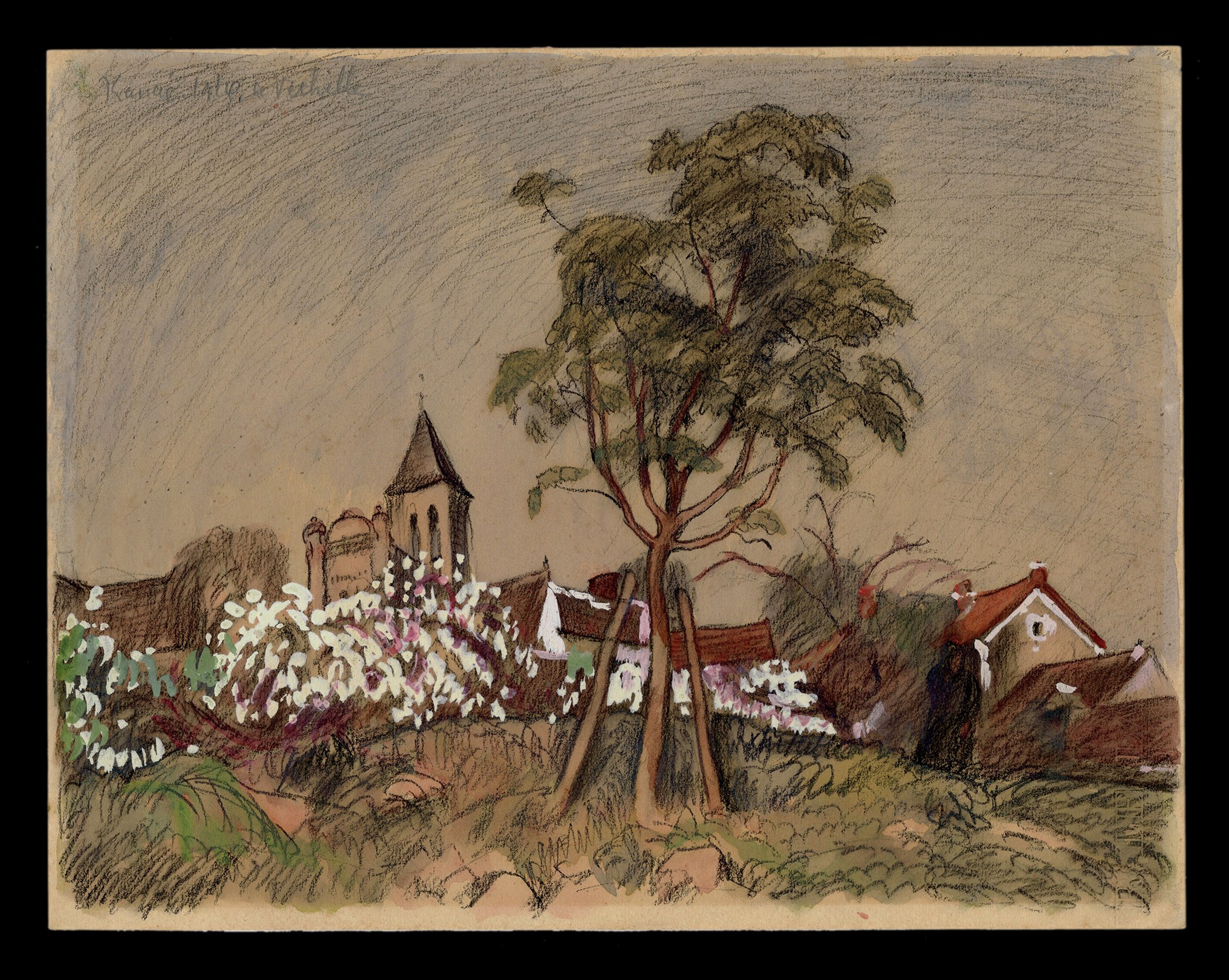 Image 1 of
Image 1 of

<b>VETHEUIL, FRANCE</b> / Kanae Yamamoto1912<b>SOLD</b></em>
Vetheuil, France
Kanae Yamamoto (1882–1946)
MEDIUM: Pastel, gauche, graphite, and pigment on paper
DATE: 1912
DIMENSIONS: 8 × 12 inches
CONDITION: Excellent, no problems to note
SOLD
Contact us to purchase
Vetheuil, France
Kanae Yamamoto (1882–1946)
MEDIUM: Pastel, gauche, graphite, and pigment on paper
DATE: 1912
DIMENSIONS: 8 × 12 inches
CONDITION: Excellent, no problems to note
SOLD
Contact us to purchase
Vetheuil, France
Kanae Yamamoto (1882–1946)
MEDIUM: Pastel, gauche, graphite, and pigment on paper
DATE: 1912
DIMENSIONS: 8 × 12 inches
CONDITION: Excellent, no problems to note
SOLD
Contact us to purchase
Details
Kanae Yamamoto (1882–1946) was a pivotal figure in the development of the modern Japanese woodblock print, particularly within the Sosaku Hanga movement. Initially trained in traditional ukiyo-e techniques, Yamamoto’s career took a transformative turn after his travels to Europe in the early 1900s. Immersed in the artistic advancements of the West, he was deeply influenced by the Impressionist and Post-Impressionist movements, as well as the evolving concept of the artist's personal expression. Upon his return to Japan, Yamamoto fused these Western artistic ideals with his traditional craft, breaking away from the rigid conventions of woodblock printing. His work championed the notion that the artist should be fully involved in every step of the process—design, carving, and printing—an ethos that became a cornerstone of the Sosaku Hanga movement. Through his innovation and dedication, Yamamoto helped sustain and popularize this new artistic direction, leaving a lasting impact on the world of Japanese printmaking.
In 1912, during his travels in France, Kanae Yamamoto created this delicate painting on paper that portrays a peaceful view of the village of Vetheuil. The scene captures a young tree with supports among vibrant flowering bushes, which contrast against the muted earth tones of the village and the church steeple rising in the background. Yamamoto’s choice of soft pastels in this piece reflects his keen eye for light and color, blending shades of green, purple, and brown to convey the tranquil atmosphere of the rural French landscape. This work bears the unmistakable influence of Western artistic movements, particularly the Impressionists, whose emphasis on light, atmosphere, and the fleeting moments of nature deeply impacted Yamamoto. Much like Claude Monet’s famous depictions of Vetheuil, Yamamoto’s painting captures the ephemeral beauty of the landscape, focusing on the nuances of color and light rather than fine detail or precise lines. The gentle brushstrokes and atmospheric quality of the piece show clear connections to Monet’s use of color and his technique of capturing light in different conditions. Yamamoto's blending of Western techniques with his own distinct vision reflects his exposure to broader European artistic movements and marks a significant moment in his evolution as an artist, merging the Impressionist approach with his deep sensitivity to Japanese aesthetic traditions.
Connoisseur's Note
This painting was originally created during Kanae Yamamoto's time in Europe, likely as part of his engagement with the broader European art world. It may have been sold to one of the patrons or subscribers of his print series, which he produced while abroad. Signed and titled in pencil at the top left, this work holds a unique historical context, tying it directly to the artist’s European experiences and his immersion in Western artistic movements. The painting is in an exceptionally excellent state of preservation, making it an ideal acquisition for an institution or a discerning collector of fine Sosaku Hanga.

